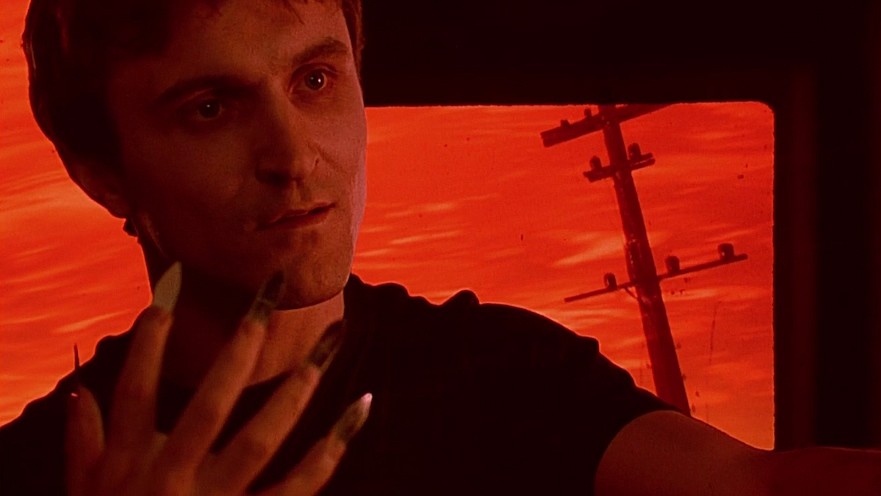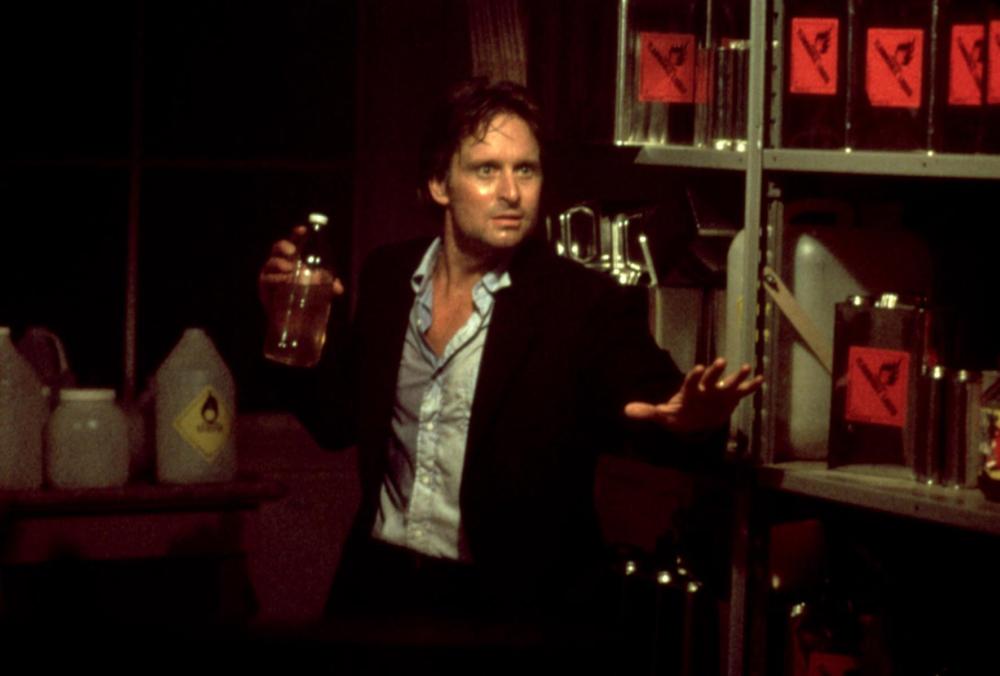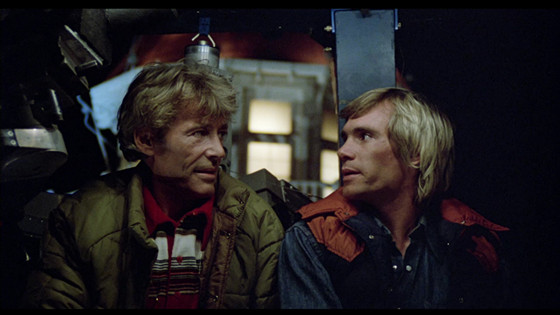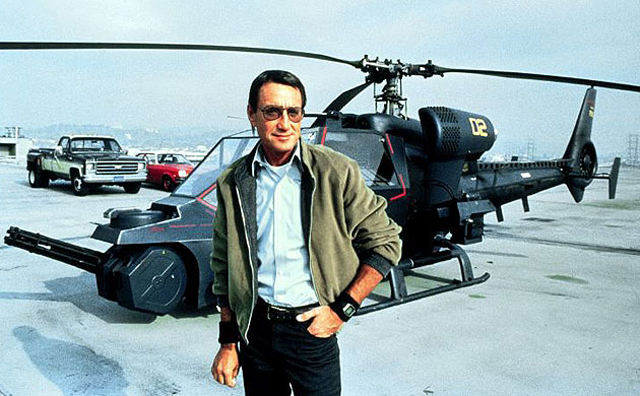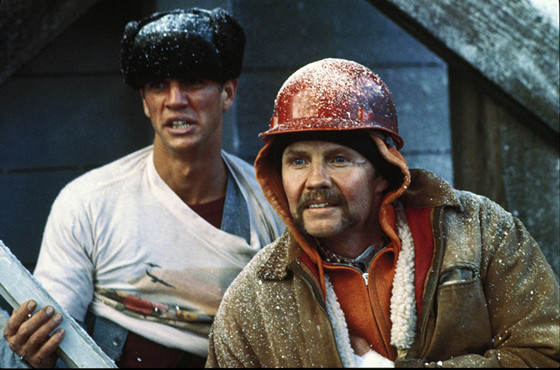5. Dreamscape (1984)
Dennis Quaid plays a self-absorbed psychic reluctantly recruited by his former mentor (Max von Sydow) to stop to a nefarious, government-run program created to assassinate political figures by infiltrating their dreams. In what could be seen as a precursor to Inception, Dreamscape effectively mixes the science-fiction, horror and conspiracy genres into a tight, consistently engaging film which, despite some its obvious 80s trappings, still holds up pretty well.
From a technical standpoint, the various dream sequences may seem quaint compared to what we’re used to seeing in today’s blockbusters. Still, when viewing the film in the context of when it was made, one can’t help but appreciate the abundant amount of creativity up on the screen, including a few scenes which truly feel like we’re peering into someone else’s nightmares.
While it’s roots are grounded in science-fiction, Dreamscape is, at its heart, a fast-paced conspiracy thriller filled with surprising plot twists and complex characters. The film was pretty-well received at the time and did decent box office, but somehow faded from nearly everyone’s memory, perhaps because it hasn’t aesthetically aged as well as other sci-fi films of the time.
4. The Star Chamber (1983)
Peter Hyams was always an unappreciated director. He’s never won an Oscar (or even been nominated for one) or helmed a runaway blockbuster. Yet, for a period roughly between 1977 and 1990, he’s been responsible to some of the most manipulatively entertaining – yet unappreciated – thrillers of the era. He had a knack for creating paranoid movies where terrible people in power wield their influence under the guise of commerce, national pride or justice. In essence, Hyams’ films of the time were often a conspiracy theorist’s wet dream.
Capricorn One, arguably Hyams’ best-known film, was initially inspired by a long-held conspiracy theory that NASA faking the moon landings. 1983’s The Star Chamber, while more down-to-Earth, is equally paranoid, speculating what powerful people might do in the name of justice, even if it means circumventing due process.
Michael Douglas plays Hardin, a judge weary of acquitting criminals due to legal technicalities. He’s soon coursed into group of like-minded judges who, in private, hold their own court, pass judgment and hire assassins to carry out the verdicts.
While Hardin’s initially onboard, he begins to question their motives after two men, innocent of the horrible acts they’re accused of, are still targeted for assassination simply because they are career criminals. Hardin then risks his own life to save these two, even after stumbling across their drug operation.
The Star Chamber raises interesting questions about justice versus vigilantism, and who ultimately has the right to determine the difference between the two. Like many of Hyams’ films back then, it’s also terrifically entertaining.
3. The Stunt Man (1980)
The Stunt Man is yet-another film which garnered nearly universal acclaim, yet failed to find an audience. Perhaps this is partially because moviegoers, expecting something more akin to the Burt Reynolds action yuck-fest, Hooper, but instead were forced to actually think.
Another reason could be that The Stunt Man defies genre categorization. It isn’t an action movie, though it does feature well-executed stunts. It isn’t a comedy, but is often very funny. It isn’t really a character study, though most here are fascinating (especially Peter O’Toole, deliciously ambiguous as Eli Cross, a megalomaniac director). With hindsight, it’s no wonder 20th Century Fox had no idea how to market this film.
While it doesn’t play like a strait-forward thriller, The Stunt Man has many of the same elements, particularly the mind games Cross appears to be playing with Cameron (Steve Railsback), a fugitive who wanders onto the set of the director’s movie and accepts a job as a stunt man.
Like the best cat-and-mouse games, this is a supremely unpredictable film which succeeds in confounding your expectations at every turn. Considering director Richard Rush and Peter O’Toole earned well-deserve Oscar nominations, it’s sad such an intriguing film has faded into relative obscurity.
2. Blue Thunder (1983)
The government has developed a state-of-the-art super-spy helicopter. It can see through walls, fly silently, look down dresses, and blow the bejeezus out of everything in its path. What better person to test-fly it over one of the biggest cities in the world than a psychologically unstable Vietnam vet?
Roy Scheider is Frank Murphy, an L.A. cop who patrols the skies at night, thwarting robberies and peeping into naked women’s windows. In his spare time, he checks his sanity with his wristwatch. He’s entrusted to fly the new copter, nicknamed Blue Thunder, during which time he discovers the Army has nefarious plans for the bird.
It’s never made too clear exactly what evil the government wants to accomplish with a helicopter, but that doesn’t stop them from trying to kill Murphy. Leading the charge for Frank’s demise is Colonel Cochrane, played by a perpetually bug-eyed Malcolm McDowell.
Blue Thunder has a very high “oh, come on!” quotient, with a ludicrous story, one-dimensional characters and gaping story holes. However, much of that is negated by a stunning climactic air battle over L.A. between Murphy and Cochrane, where buildings explode, planes are shot down and a copter is taken out by a freight train (though no one, including our hero, seems at-all concerned about the massive collateral damage).
While Badham never made a smart movie in his life, he deftly handles these action scenes with considerable skill, aided by a great cast. Scheider is terrific (though he’s played so many cops in his career that he probably phoned this one in), as is Warren Oates (in his last role), who manages to make the most out of his cliched angry police captain character.
1983 was a banner year for director John Badham, whose WarGames was released around the same time. Both films were box office hits, but while WarGames has since become a minor classic, Blue Thunder has largely been forgotten (even after inspiring a short-lived TV series). A shame, really, because at the time, Blue Thunder and all its fiery mayhem was arguably the most entertaining pure action film since Raiders of the Lost Ark.
1. Runaway Train (1985)
Adapted from an unproduced screenplay by none other than Akira Kurosawa, if there is such a thing as an existential action film, Runaway Train fits the bill.
Jon Voight plays Manny Manheim, a career convict who manages to escape from an Alaskan maximum security prison with dumbell Buck McGeehy (Eric Roberts) in tow. The two hop onboard a freight train, but after the conductor suffers a heart attack and dies, they become helpless passengers as it picks up speed, with sadistic prison warden Rankin (John P. Ryan) obsessively hunting them down.
Meanwhile, Sara (Rebecca De Mornay) is a hostage/ally, ultimately the moral compass for Manny and Buck as the story effortlessly progresses from a standard action thriller to one which questions its main characters’ values and ideas of heroism.
Despite several brilliantly-executed action sequences, some of which might prompt one to label this a disaster movie, Runaway Train is ultimately a dark, intense and haunting film that has a lot more to say about the human condition than we are prepared for. For much of the film, we do not know who to side with, since every character (aside from Sara) is morally ambiguous at best.
Jon Voight may be the star, but it’s ultimately Eric Roberts who steals the film in a performance completely unlike the direct-to-video garbage he’s currently famous for. He is, by turns, stupid, offensive, pathetic, heroic and, in the end, the most likable guy in the movie. It takes a hell of a lot of skill to pull that off.
Runaway Train earned Oscar nominations for both Voight and Roberts (along with a nod for the film’s editing). Still, this film is now shamefully forgotten by most moviegoers. When one recalls the greatest thrillers of the 80s, perhaps it was too intellectually ambitious for its own good.
The haunting final scene is narratively perfect, suggesting there’s victory to be found to death, much like Thelma & Louise a few years later, though not necessarily crowd-pleasing for those expecting a slam-bang climax typical of other films of the era.
Author Bio: D.M. Anderson lives, works and writes in Portland, Oregon. A lifelong film fanatic, he has written articles for WhatCulture.com, MoviePilot and is contributing to an upcoming book about animal attack movies. His blog, Free Kittens Movie Guide, chronicles his ongoing adventures of life in the dark.
